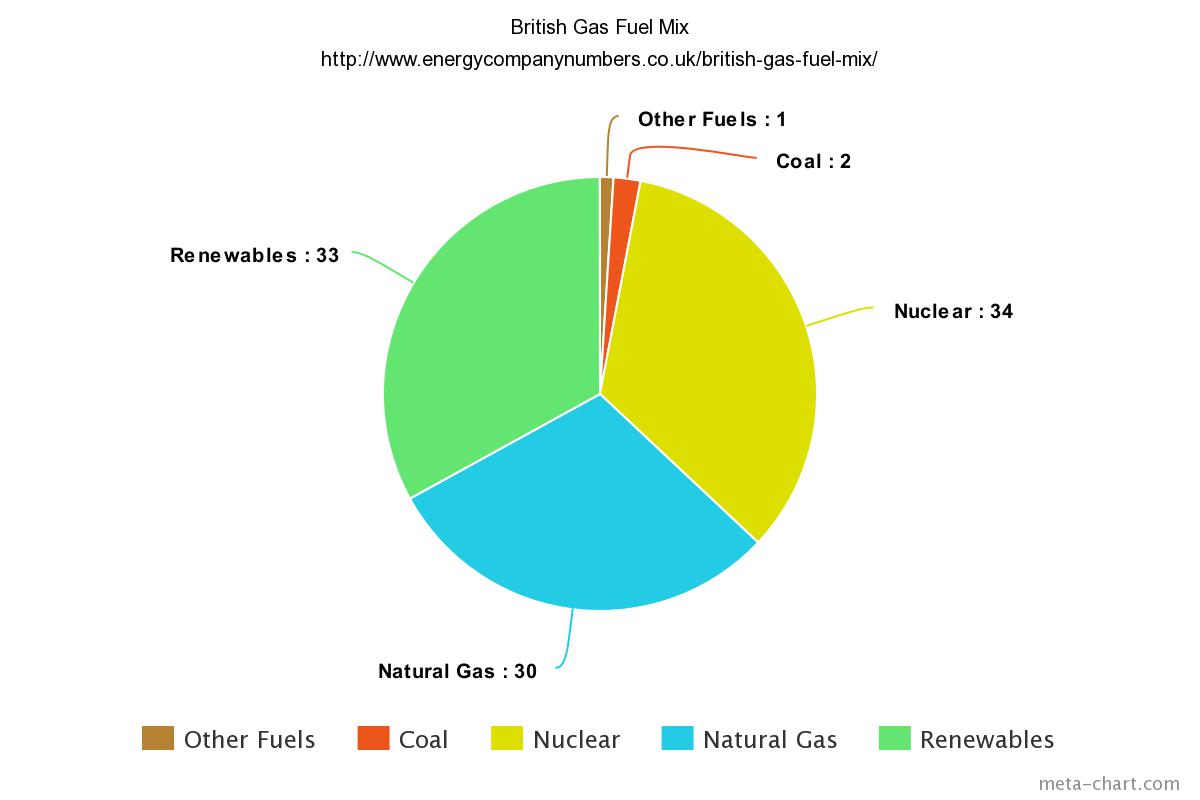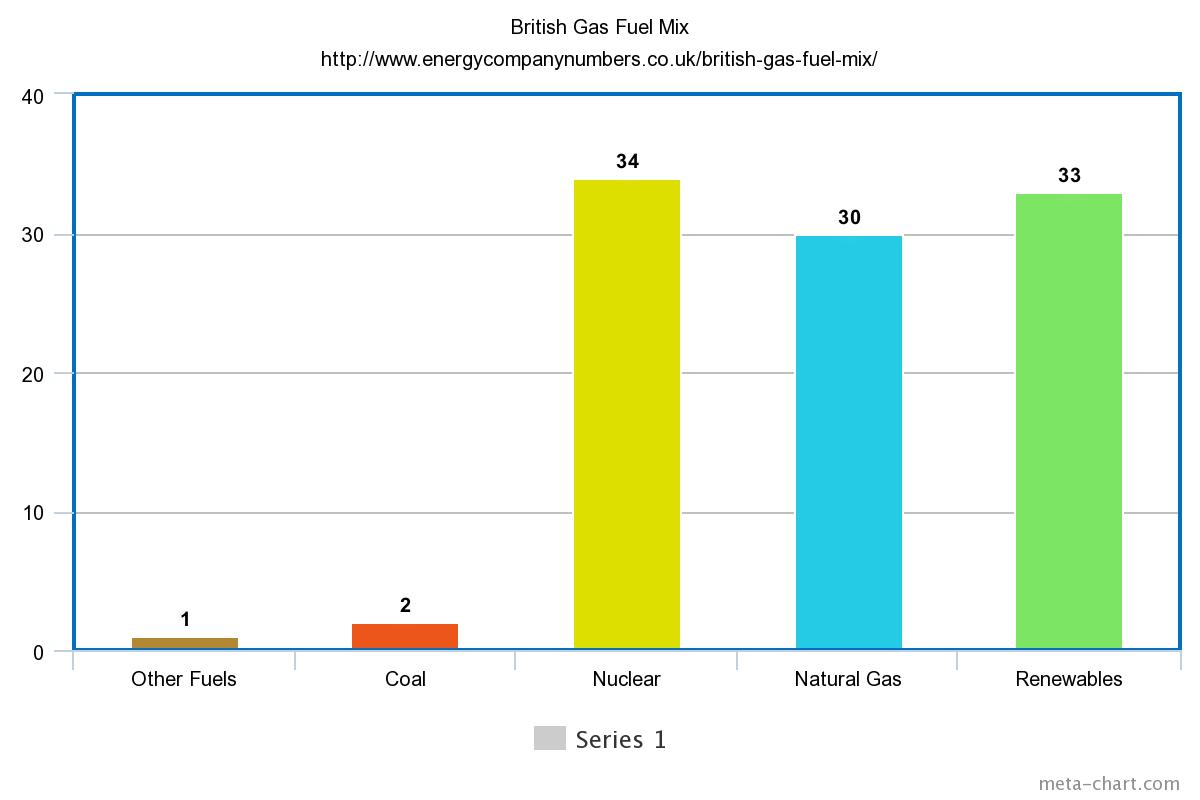British Gas, like all energy suppliers, has a fuel mix that incorporates several different fuels. British Gas was founded in a time when coal and nuclear were the primary energy sources for electricity generation. Now, renewable energy sources are just as sustainable, which has led to British Gas diversifying its fuel mix considerably in the last 10 years.
British Gas Fuel Mix
| BRITISH GAS ENERGY SOURCE | APRIL 2015 to MARCH 2016 |
|---|---|
| Other Fuels | 1% |
| Coal | 2% |
| Nuclear | 34% |
| Natural Gas | 30% |
| Renewables | 33% |
British Gas uses predominantly nuclear energy sources to generate electricity (34 per cent), with the second-most energy source being renewables (33 per cent).
Note that these figures were taken directly from British Gas (source).
Here’s a pie chart illustrating that British Gas Fuel Mix:

And here’s a bar chart illustrating the same:

If we compare these figures for the period 1st April 2014 to 31st March 2015, we can see that British Gas has made significant progress with renewables:
| BRITISH GAS ENERGY SOURCE | APRIL 2014 to MARCH 2015 |
|---|---|
| Other Fuels | 2% |
| Coal | 11% |
| Nuclear | 31% |
| Natural Gas | 33% |
| Renewables | 23% |
The data above shows that in the space of a single year, British Gas has increased its reliance on renewable energy sources by 10 per cent.
How the British Gas Fuel Mix Compares to the UK Average
British Gas generates just 2 per cent of its electricity from coal, compared to a UK average of 17 per cent, and they generate 33 per cent of their electricity from renewables, compared a UK average of 24 per cent. However, British Gas generates 34 per cent of their electricity through nuclear energy, compared to a UK average of 24 per cent, and they generate 30 per cent of their electricity from natural gas, compared to a UK average of 32 per cent. We can summarise from this that British Gas is heavily reliant on nuclear energy to fulfil the energy needs of their customers.




